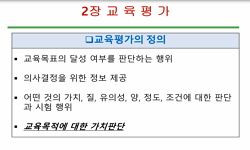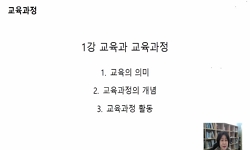The Bohai Sea is the immense inland sea in China and the Bohai Strait is a sea graben from East China to Northeast China which lies between the Jiaodong Peninsula and the Liaodong Peninsula. Considering the forthcoming Bohai Strait subsea tunnel, the ...
http://chineseinput.net/에서 pinyin(병음)방식으로 중국어를 변환할 수 있습니다.
변환된 중국어를 복사하여 사용하시면 됩니다.
- 中文 을 입력하시려면 zhongwen을 입력하시고 space를누르시면됩니다.
- 北京 을 입력하시려면 beijing을 입력하시고 space를 누르시면 됩니다.



Comprehensive and Quantitative Evaluation of Subsea Tunnel Route Selection: A Case Study on Bohai Strait
한글로보기https://www.riss.kr/link?id=A107821155
-
저자
Yiguo Xue (Shandong University) ; Chuanqi Qu (Shandong University) ; Maoxin Su (Shandong University) ; Daohong Qiu (Shandong University) ; Xin Li (Shandong University) ; Xinmin Ma (Shandong University)
- 발행기관
- 학술지명
- 권호사항
-
발행연도
2021
-
작성언어
English
- 주제어
-
등재정보
KCI등재,SCIE,SCOPUS
-
자료형태
학술저널
-
수록면
3540-3555(16쪽)
-
KCI 피인용횟수
0
- DOI식별코드
- 제공처
-
0
상세조회 -
0
다운로드
부가정보
다국어 초록 (Multilingual Abstract)
The Bohai Sea is the immense inland sea in China and the Bohai Strait is a sea graben from East China to Northeast China which lies between the Jiaodong Peninsula and the Liaodong Peninsula. Considering the forthcoming Bohai Strait subsea tunnel, the authors selected nine indicators including seabed topography, stratigraphic lithology, geological structure, earthquake, environmental impact, engineering scale, ventilation conditions, residents’ satisfaction, and landing position. These indicators are considered as evaluation indexes to evaluate three alternative routes of the Bohai Strait subsea tunnel: line A, line B, and line C. In this paper, the evaluation model of the Bohai Strait subsea tunnel based on analytic hierarchy process (AHP) and extension theory is established. In this regard, the grade of route selection is divided into four categories: excellent, good, average, and bad. Finally, through the model calculations, it is concluded that line B of the Bohai Strait subsea tunnel is the best, and line A is the worst. This method provides a new idea for the evaluation of subsea tunnel site selection and also represents some references for other types of engineering site selection.
참고문헌 (Reference)
1 Xue YG, "Using Indirect testing methods to quickly acquire the rock strength and rock mass classification in tunnel engineering" 20 (20): 05020001-, 2020
2 Wang MS, "Urgency and current construction conditions and preliminary scheme of Bohai Strait cross-sea channel" 037 (037): 1-10, 2013
3 Song CY, "The overall design of qingdao jiaozhou bay subsea tunnel" 368-373 : 2971-2976, 2011
4 Anguera R, "The channel tunnel-An ex post economic evaluation" 40 (40): 291-315, 2006
5 Kitamura A, "Technical development for the Seikan tunnel" 1 (1): 341-349, 1986
6 Xu BS, "Study on the reasonable cover thickness of a subsea tunnel with the numerical calculation criterion method" 2016
7 Wang YM, "Study on the environmental impact of trans-bohai strait passageway engineering based on deep buried full tunnel scheme" 41 (41): 170-175, 2016
8 Dahlø TS, "Stability and rock cover of hard rock subsea tunnels" 9 (9): 151-158, 1994
9 Cheng XS, "Stability analysis of a cross-sea tunnel structure under seepage and a bidirectional earthquake" 17 (17): 06017008-, 2017
10 Ishizaka A, "Review of the main developments in the analytic hierarchy process" 38 (38): 14336-14345, 2011
1 Xue YG, "Using Indirect testing methods to quickly acquire the rock strength and rock mass classification in tunnel engineering" 20 (20): 05020001-, 2020
2 Wang MS, "Urgency and current construction conditions and preliminary scheme of Bohai Strait cross-sea channel" 037 (037): 1-10, 2013
3 Song CY, "The overall design of qingdao jiaozhou bay subsea tunnel" 368-373 : 2971-2976, 2011
4 Anguera R, "The channel tunnel-An ex post economic evaluation" 40 (40): 291-315, 2006
5 Kitamura A, "Technical development for the Seikan tunnel" 1 (1): 341-349, 1986
6 Xu BS, "Study on the reasonable cover thickness of a subsea tunnel with the numerical calculation criterion method" 2016
7 Wang YM, "Study on the environmental impact of trans-bohai strait passageway engineering based on deep buried full tunnel scheme" 41 (41): 170-175, 2016
8 Dahlø TS, "Stability and rock cover of hard rock subsea tunnels" 9 (9): 151-158, 1994
9 Cheng XS, "Stability analysis of a cross-sea tunnel structure under seepage and a bidirectional earthquake" 17 (17): 06017008-, 2017
10 Ishizaka A, "Review of the main developments in the analytic hierarchy process" 38 (38): 14336-14345, 2011
11 Nian Zhang, "Research on the Technology of Disaster Prevention and Rescue in High-altitude Super-long Railway Tunnel" 대한토목학회 19 (19): 756-764, 2015
12 Russell OR, "Remote sensing for tunnel siting studies" 106 (106): 523-537, 1980
13 Wang X, "Preliminary considerations of the planning for bohai strait subsea tunnel" 156 : 663-670, 2017
14 Eisenstein ZD, "Large undersea tunnels and the progress of tunnelling technology" 9 (9): 283-292, 1994
15 Zeinab Ghaed Rahmat, "Landfill Site Selection using GIS and AHP: a Case Study: Behbahan, Iran" 대한토목학회 21 (21): 111-118, 2017
16 김효승, "Integrated Decision Model of Mode, Line, and Frequency for a New Transit Line to Improve the Performance of the Transportation Network" 대한토목학회 20 (20): 393-400, 2016
17 Sharifzadeh M, "Influence of rock mass properties on tunnel inflow using hydromechanical numerical study" 6 (6): 169-175, 2013
18 Cai W, "Extension theory and its application" 44 (44): 1538-1548, 1999
19 He Q, "Extension principles and fuzzy set categories" 39 (39): 45-53, 2000
20 Huang RQ, "Engineering geological assessment for route selection of railway line in geologically active area : A case study in China" 10 (10): 495-508, 2013
21 Qi JX, "Earthquake risk analysis in the engineering area of Bohai Strait cross-sea channel" 19 (19): 93-103, 2013
22 Zhao D, "Displacement prediction of tunnels based on a generalised Kelvin constitutive model and its application in a subsea tunnel" 54 : 29-36, 2016
23 Huang HW, "Deep learning based image recognition for crack and leakage defects of metro shield tunnel" 77 : 166-176, 2018
24 Dong YC, "Consensus models for AHP group decision making under row geometric mean prioritization method" 49 : 281-289, 2010
25 Nilsen B, "Characteristics of water ingress in Norwegian subsea tunnels" 47 (47): 933-945, 2014
26 Sherman RG, "Boston harbor outfall tunnel : An environmental imperative" 9 (9): 309-322, 1994
27 Wang IT, "Application of GIS on rapid evaluation for potential portal areas of tunnels" 479-480 : 1056-1060, 2013
28 Vaidya OS, "Analytic hierarchy process : An overview of applications" 169 (169): 1-29, 2006
29 Nilsen B, "Analysis of potential cave-in from fault zones in hard rock subsea tunnels" 27 (27): 63-75, 1994
30 Xue Y, "Analysis of factors influencing tunnel deformation in loess deposits by data mining : A deformation prediction model" 232 : 94-103, 2018
31 Saaty TL, "An exposition of the AHP in reply to the paper"Remarks on the analytic hierarchy process"" 36 : 259-268, 1990
32 정지희, "An ANN to Predict Ground Condition ahead of Tunnel Face using TBM Operational Data" 대한토목학회 23 (23): 3200-3206, 2019
33 Li Z, "AHP-ideal point model for large underground petroleum storage site selection : An engineering application" 9 (9): 2343-, 2017
34 Xue YG, "A prediction model for overlying rock thickness of subsea tunnel : A hybrid intelligent system" 37 (37): 1-10, 2019
35 Yildirim V, "A geographic information system-based model for economical and eco-friendly high-speed railway route determination using analytic hierarchy process and least-cost-path analysis" 36 (36): e12376-, 2019
동일학술지(권/호) 다른 논문
-
A Markov Decision Process Workflow for Automating Interior Design
- 대한토목학회
- Ebrahim Karan
- 2021
- KCI등재,SCIE,SCOPUS
-
Reactive Procedure for Robust Project Scheduling under the Activity Disruptions
- 대한토목학회
- Lei Li
- 2021
- KCI등재,SCIE,SCOPUS
-
- 대한토목학회
- Yi-Hsin Lin
- 2021
- KCI등재,SCIE,SCOPUS
-
- 대한토목학회
- Batagalle Vinuri Gimanthika Karunarathne
- 2021
- KCI등재,SCIE,SCOPUS
분석정보
인용정보 인용지수 설명보기
학술지 이력
| 연월일 | 이력구분 | 이력상세 | 등재구분 |
|---|---|---|---|
| 2023 | 평가예정 | 해외DB학술지평가 신청대상 (해외등재 학술지 평가) | |
| 2020-01-01 | 평가 | 등재학술지 유지 (해외등재 학술지 평가) |  |
| 2010-01-01 | 평가 | 등재학술지 유지 (등재유지) |  |
| 2008-01-01 | 평가 | 등재학술지 유지 (등재유지) |  |
| 2005-05-27 | 학술지명변경 | 한글명 : 대한토목학회 영문논문집 -> KSCE Journal of Civil Engineering |  |
| 2005-01-01 | 평가 | 등재학술지 선정 (등재후보2차) |  |
| 2004-01-01 | 평가 | 등재후보 1차 PASS (등재후보1차) |  |
| 2002-01-01 | 평가 | 등재후보학술지 선정 (신규평가) |  |
학술지 인용정보
| 기준연도 | WOS-KCI 통합IF(2년) | KCIF(2년) | KCIF(3년) |
|---|---|---|---|
| 2016 | 0.59 | 0.12 | 0.49 |
| KCIF(4년) | KCIF(5년) | 중심성지수(3년) | 즉시성지수 |
| 0.42 | 0.39 | 0.286 | 0.06 |




 KCI
KCI






